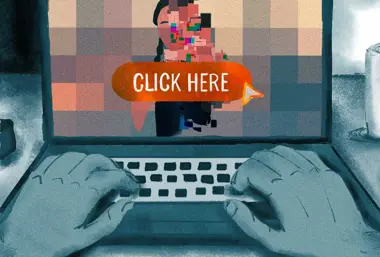
Child sexual abuse material vs ‘child porn’: why language matters
There is No Such Thing as ‘child pornography’.

Published: Wed 17 Jul 2019
Today (Wednesday 17 July) I will be a panellist at an event with people on both sides of the DNS over HTTPs (DoH) argument. I’ve outlined IWF’s serious and real concerns about how DoH could expose millions of internet users across the globe - of any age – to seeing the most terrible images and videos of children being sexually abused.
Today I will be clear about where we stand: We’re not calling on DoH to be banned. But those creating this technology, and then those deciding to roll it out, need to speak to relevant people to understand the impact of how it’s being implemented from safeguarding and policy perspectives.
Everyone’s data should be secure from unnecessary snooping – that’s something I have always said. Encryption itself is not a bad thing – I’m all for better security. But on this occasion, it’s about the way in which DNS over HTTPS is being implemented which is the problem.
Today there are 5,502 URLs on the IWF URL List.
Last year 100,682 unique URLs were on our list over 365 days. It’s a sad reality that we can’t possibly count the number of individual images and videos there are on each URL as there are just too many. But each contains at least one image or video showing a child being sexually abused.
It’s hard for someone who doesn’t work in our hotline to understand what this means and I’m loathed to put ‘real’ words to it. These aren’t holiday snaps of children on a beach. These are often the systematic abuse of children. Adults forcing their fully-grown bodies on small children for their own gratification; adults tricking or encouraging children into getting naked and touching themselves in front of a webcam. It’s sexual abuse. It’s humiliating and it’s life-ruining.
IWF has worked for more than 23 years to prevent sexual predators from seeing such images. We’re more than capable of adapting to the changes of the internet and over the years we’ve built new ways to help victims and survivors of abuse by providing internet companies with the tools to stop and remove this imagery more quickly.
However, it could be no less than catastrophic if the imagery I described – millions of images and videos per year – was suddenly unshielded from public view due to oversight.
We’re already in a national crisis. The police have told us that, in their conservative estimate, between 60,000 and 80,000 men in the UK look for this material. We won’t therefore be silent when a well-meaning technology comes along which has the unintended – but catastrophic – impact like this one.
The UK will score an own-goal in the fight against child sexual abuse material if DNS over HTTPs is implemented in the current way it’s proposed. We need to work together to ensure enhancements to privacy and security are not at the expense of the most vulnerable in society.

There is No Such Thing as ‘child pornography’.